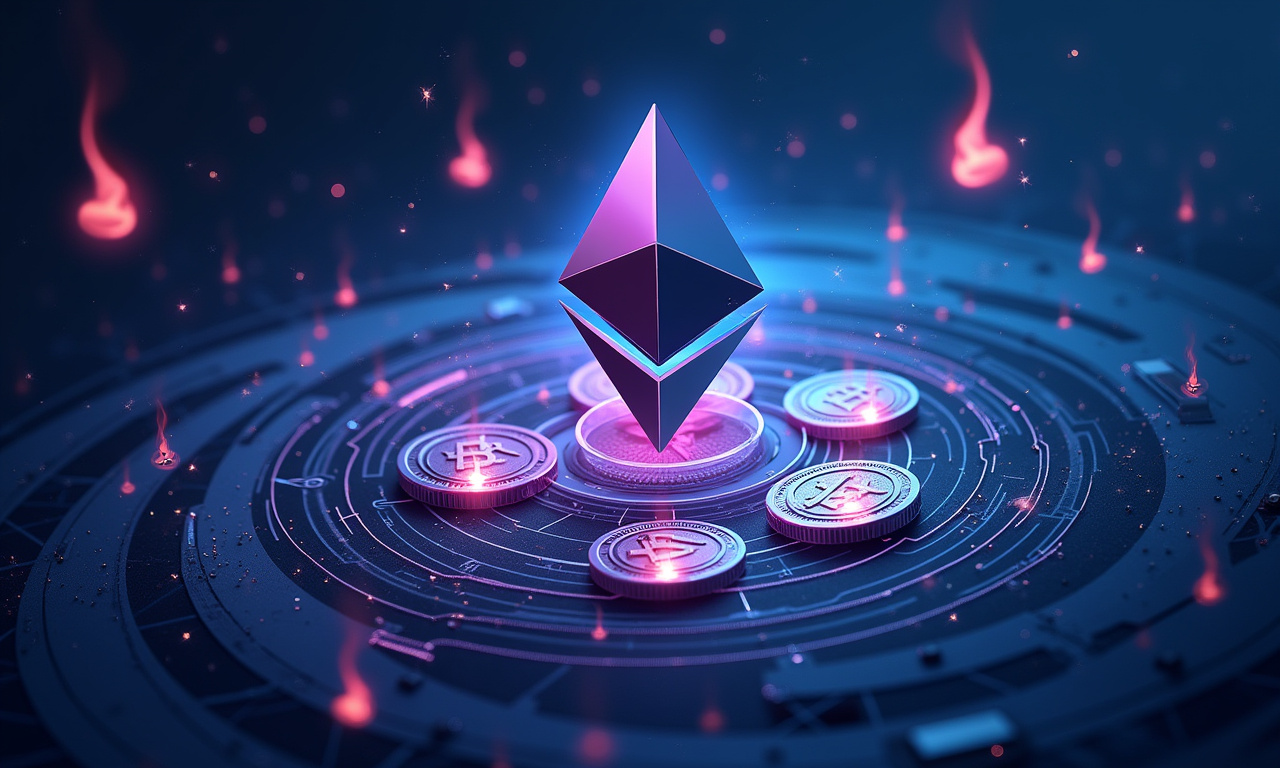The ERA airdrop. Remember it? A brief moment of excitement quickly turned to despair by the harsh truth of Ethereum’s gas fees. A 36.7% spike! That was more than an inconvenience, it was a shot across the bow. This continues to be a grim reminder. Unfortunately, the promise of a decentralized future built on Ethereum can occasionally be taken hostage by its own success. Or is it simply a change of venue, the unavoidable growing pain required to push us down the path to mass adoption? Or is it a crippling defect that will kill innovation and drive users elsewhere? Let's dive in, shall we?
Decentralization's Price Tag: High Fees?
Ethereum's core strength – its unwavering commitment to decentralization – is its Achilles' heel. Think of it like this: imagine a bustling city center (Ethereum) with only a few narrow roads (limited block space). Each business just wants to move people quickly (onboard customers), but the lack of room forces a choke point. That's where gas fees come in. They’re the tolls you pay not to sit in traffic.
EIP-1559 tried to make things more predictable, but it didn't solve the fundamental problem: too much demand, not enough capacity. The millions of new users resulting from the ERA airdrop only revealed this limitation in a dramatic way. 30.73 ETH burned in an hour! That's insane. I’d feel like I was burning my old tax returns to see that much ETH go up in a cloud of computational vapor.
Ethereum's decentralization demands this. That is the price we pay for a censorship resistant network in which no one party can determine what flows through the network. Sacrificing decentralization for scalability is akin to demolishing our cosmopolitan city’s architectural treasures to widen the interstate. It may allow you to move more cars, but you’ve sacrificed the character of the community. Let's be honest: if we wanted centralized efficiency, we'd all just stick with our banks, wouldn't we?
Layer 2: Savior or Band-Aid Solution?
Rollups, the current darlings of the Layer 2 scaling world, provide a bit more promise. They combine many of these transactions off-chain, then post one batched, compressed transaction back to the Ethereum main chain. Picture it as a carpool lane for data. It sounds great. Sure, it can lower gas fees. But is it enough?
The problem is adoption. The idea of getting everyone on the same Layer 2 solution is a little like herding cats. Here’s the problem—there are dozens of competing rollups, each with their own idiosyncrasies and constraints. Let's not forget the user experience. Jumping back and forth between each layer can be cumbersome and disorienting and particularly daunting for first-timers. Shotgun Triage Imagine having to boot into three different versions of Windows just to open a basic .txt file. Frustrating, right?
And even with rollups, we constitutionally are limited by the capacity of the main Ethereum chain. Proto-Danksharding and Danksharding do offer ways to vastly expand that capacity, but those are not coming until a much later date. Or are we merely postponing the new normal? Are we just hoping that as we upgrade to the future, all our problems get miraculously solved by serendipity? Are we heading towards another painful increase in gas prices? Which is a concern in the short run, when the next hot new project is likely to make waves with an airdrop.
Is There Life Beyond Ethereum?
The exorbitant gas fee situation isn’t merely an inconvenience, it’s an existential threat to Ethereum’s dominance. Users and developers are increasingly looking at alternative blockchains that offer lower transaction costs, higher throughput, and fast confirmation times. Solana, Avalanche, Fantom – these are more than just sci-fi sounding names – they are real, present challengers competing for Ethereum’s throne.
They are able to get lower fees primarily by taking other trade-offs in the opposite direction, common among these alternative blockchains. Perhaps they trade away a little bit of decentralization or security for increased scalability. Are these trade-offs worth it? That's the million-dollar question.
Here's a thought experiment: imagine Ethereum is like a luxury car. It's beautiful, powerful, and prestigious. It’s also notoriously very expensive to maintain and politically unfeasible for many types of journeys. Alternative blockchains, by contrast, are more like dependable commuter cars that get great miles per gallon. They won’t win any beauty contests, but they’ll take you further on a dollar and get you where you need to go.
In the end, the future of blockchain probably won’t be winner-takes-all. Clearly, different blockchains will be better suited to different use cases—and that’s OK. Each blockchain will have its own strengths and weaknesses. If Ethereum aspires to be a long-term leader in this space, it has to tackle the gas fee issue directly.
Ethereum gas fee prices increasing demonstrates how fluid the cryptosphere is right now. This volatility is an acute example and a stark reminder of how rapidly things can change in this market. Something's got to give.
So, what's the answer? Is it just a necessary evil, or is it a fatal flaw? I don't have a crystal ball. But I do know, and you should too, that Ethereum developers must focus first on implementing effective scaling solutions as soon as possible. Innovation is only as good as its accessibility. We want a future where everyone can get in on the decentralized revolution—not just those with deep wallets. If not, Ethereum will become a gated community, and that’s a sad thing for the ecosystem and for us all. Now, let's talk about it. What do you think?




